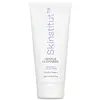What's inside
What's inside
 Key Ingredients
Key Ingredients

 Benefits
Benefits

 Concerns
Concerns

 Ingredients Side-by-side
Ingredients Side-by-side

Water
Skin ConditioningGlycerin
HumectantDecyl Glucoside
CleansingAmmonium Lauryl Sulfate
CleansingXanthan Gum
EmulsifyingEthylhexylglycerin
Skin ConditioningLactic Acid
BufferingTocopherol
AntioxidantPanthenol
Skin ConditioningPhenoxyethanol
PreservativeOlea Europaea Leaf Extract
PerfumingLycium Barbarum Fruit Extract
AstringentPotassium Sorbate
PreservativeCamellia Sinensis Extract
AntioxidantAloe Barbadensis Leaf Juice
Skin ConditioningMaltodextrin
AbsorbentSodium Hydroxide
BufferingSodium Benzoate
MaskingCitric Acid
BufferingCucumis Sativus Oil
EmollientWater, Glycerin, Decyl Glucoside, Ammonium Lauryl Sulfate, Xanthan Gum, Ethylhexylglycerin, Lactic Acid, Tocopherol, Panthenol, Phenoxyethanol, Olea Europaea Leaf Extract, Lycium Barbarum Fruit Extract, Potassium Sorbate, Camellia Sinensis Extract, Aloe Barbadensis Leaf Juice, Maltodextrin, Sodium Hydroxide, Sodium Benzoate, Citric Acid, Cucumis Sativus Oil
Xanthan Gum
EmulsifyingVanilla Planifolia Fruit Extract
Skin ConditioningSorbitol
HumectantSodium Hydroxide
BufferingSodium Glycolate
BufferingPhenoxyethanol
PreservativeMagnesium Aluminum Silicate
AbsorbentLaureth-4
EmulsifyingGlycolic Acid
BufferingGlycol Distearate
EmollientEthylhexylglycerin
Skin ConditioningCocamidopropyl Betaine
CleansingCetearyl Alcohol
EmollientCamellia Sinensis Leaf Extract
AntimicrobialWater
Skin ConditioningAmmonium Lauryl Sulfate
CleansingXanthan Gum, Vanilla Planifolia Fruit Extract, Sorbitol, Sodium Hydroxide, Sodium Glycolate, Phenoxyethanol, Magnesium Aluminum Silicate, Laureth-4, Glycolic Acid, Glycol Distearate, Ethylhexylglycerin, Cocamidopropyl Betaine, Cetearyl Alcohol, Camellia Sinensis Leaf Extract, Water, Ammonium Lauryl Sulfate
Ingredients Explained
These ingredients are found in both products.
Ingredients higher up in an ingredient list are typically present in a larger amount.
Ammonium Lauryl Sulfate is a type of sulfate. It can be bad for dry skin, be bad for oily skin, and cause irritation.
Ethylhexylglycerin (we can't pronounce this either) is commonly used as a preservative and skin softener. It is derived from glyceryl.
You might see Ethylhexylglycerin often paired with other preservatives such as phenoxyethanol. Ethylhexylglycerin has been found to increase the effectiveness of these other preservatives.
Phenoxyethanol is a preservative that has germicide, antimicrobial, and aromatic properties. Studies show that phenoxyethanol can prevent microbial growth. By itself, it has a scent that is similar to that of a rose.
It's often used in formulations along with Caprylyl Glycol to preserve the shelf life of products.
Sodium Hydroxide is also known as lye or caustic soda. It is used to adjust the pH of products; many ingredients require a specific pH to be effective.
In small amounts, sodium hydroxide is considered safe to use. However, large amounts may cause chemical burns due to its high alkaline.
Your skin has a natural pH and acid mantle. This acid mantle helps prevent harmful bacteria from breaking through. The acid mantle also helps keep your skin hydrated.
"Alkaline" refers to a high pH level. A low pH level would be considered acidic.
Learn more about Sodium HydroxideWater. It's the most common cosmetic ingredient of all. You'll usually see it at the top of ingredient lists, meaning that it makes up the largest part of the product.
So why is it so popular? Water most often acts as a solvent - this means that it helps dissolve other ingredients into the formulation.
You'll also recognize water as that liquid we all need to stay alive. If you see this, drink a glass of water. Stay hydrated!
Learn more about WaterXanthan gum is used as a stabilizer and thickener within cosmetic products. It helps give products a sticky, thick feeling - preventing them from being too runny.
On the technical side of things, xanthan gum is a polysaccharide - a combination consisting of multiple sugar molecules bonded together.
Xanthan gum is a pretty common and great ingredient. It is a natural, non-toxic, non-irritating ingredient that is also commonly used in food products.
Learn more about Xanthan Gum